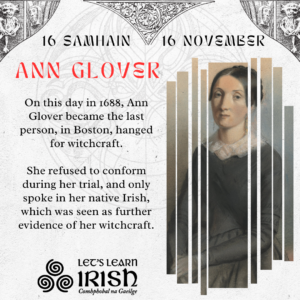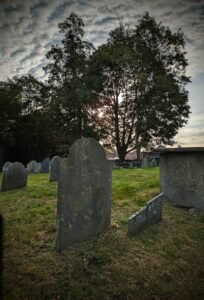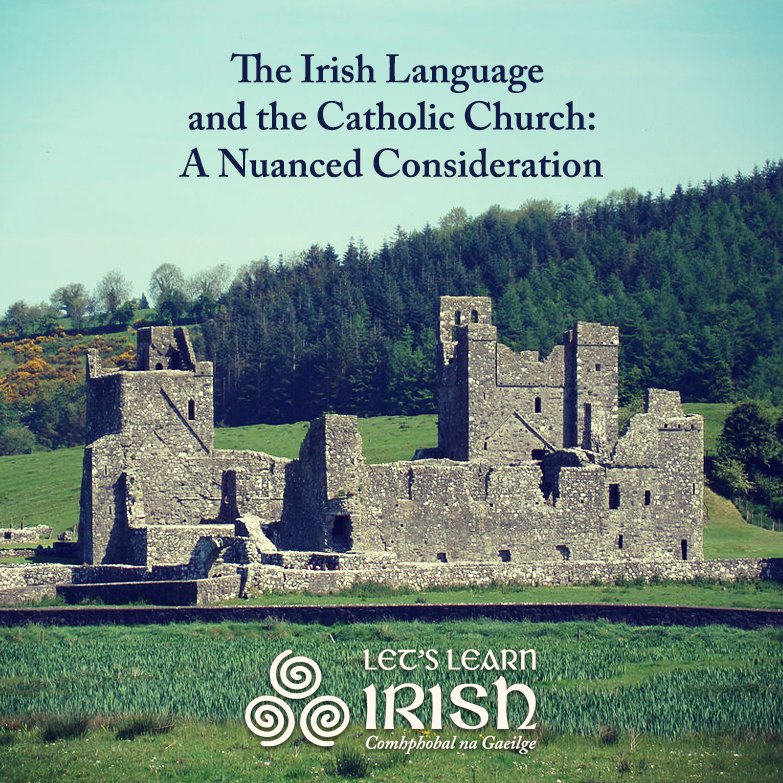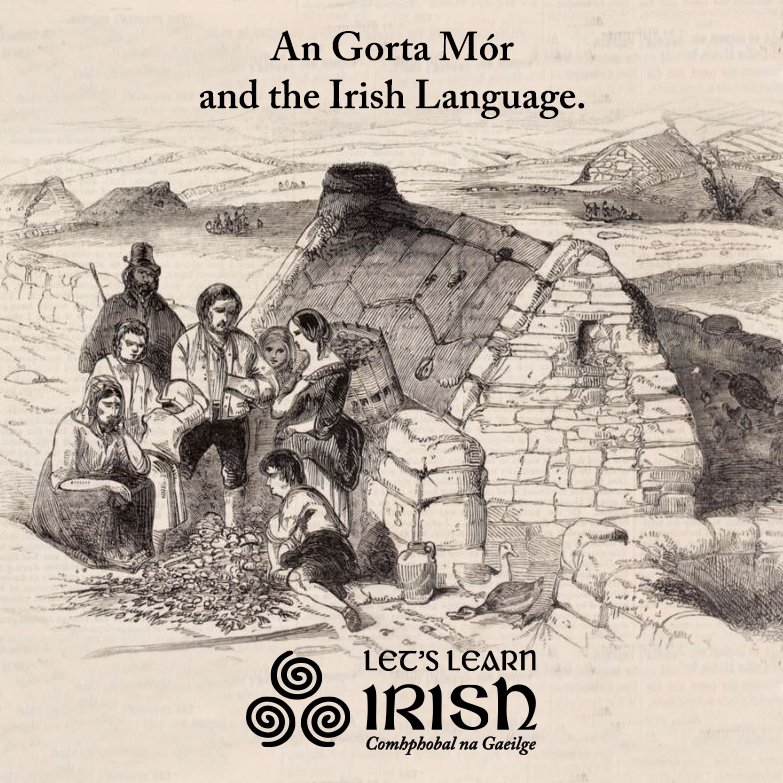Ann Glover, Irish-speaking ‘witch’ hanged in Boston
 Ar chuala tú riamh faoi Ann Glover? A native speaker of Irish, her tragic tale begins in rural Ireland, and ends in Boston, where she is recorded as the last person hanged for witchcraft…
Ar chuala tú riamh faoi Ann Glover? A native speaker of Irish, her tragic tale begins in rural Ireland, and ends in Boston, where she is recorded as the last person hanged for witchcraft…
Although Ann’s date and place of birth are undocumented, we know that she was a native Irish speaker. During the Cromwellian invasion of Ireland in the 1650s, Ann and her husband were among those rounded up and sent to Barbados as indentured servants. They worked on a sugar plantation, and it is said that her husband died there, supposedly executed for failing to renounce his Catholic faith.
Accusations of Witchcraft
Now a widow, Ann and her daughter moved to Boston in the 1680s, where she was known locally as “Goody Glover”. Here she and her daughter found work as housekeepers for a stonemason, John Goodwin, and his five children.
The story goes that in the summer of 1688, 13-year-old Martha, the eldest daughter of Goodwin, accused Ann’s daughter of stealing laundry. This caused Ann to have a fierce argument with Martha and the Goodwin children, which reportedly led them to become ill and to start acting strange. While most historians believe that the children faked their afflictions, these allegations gained traction at a time when Puritan settlers were beholden to a late-17th-century outbreak of witch hysteria. When the physician, Dr. Thomas Oakes, could not decipher the cause, or remedy, for the illness, he suggested that something sinister was afoot, commenting that “nothing but a hellish Witchcraft could be the origin of these maladies.” As a result, Ann Glover was arrested to stand trial as a witch.
Enter Cotton Mather...
Cotton Mather, a Puritan Minister, was a well-known intellectual and public figure in colonial America. To this point, Cotton had lived in the shadow of his celebrated father Increase, the president of Harvard College, but in the case of Ann Glover, he saw an opportunity to further his profile and puritan agenda. Mather was convinced that Ann Glover was a witch, and he played a prominent role in the trial against her.
 In 1689, Mather published a bestselling book, “Memorable Providences, Relating to Witchcrafts and Possession”, detailing Glover’s trial and supposed witchcraft. He claimed his account was a faithful account of “a pious Family in Boston, very lately and sadly molested with Evil Spirits.” At this time, Boston was mainly occupied by Puritans, who often held a prejudice against Catholics. During the trial, Cotton Mather called Ann Glover “a scandalous old Irishwoman, very poor, a Roman Catholic and obstinate in idolatry.” In his writing, Mather refers to Ann as both “the Witch” and “the Hag”. As well as causing the illness of the Goodwin family, Mather reported that Ann Glover had been seen coming down a chimney, and that a neighbour’s son had also been afflicted with a strange illness.
In 1689, Mather published a bestselling book, “Memorable Providences, Relating to Witchcrafts and Possession”, detailing Glover’s trial and supposed witchcraft. He claimed his account was a faithful account of “a pious Family in Boston, very lately and sadly molested with Evil Spirits.” At this time, Boston was mainly occupied by Puritans, who often held a prejudice against Catholics. During the trial, Cotton Mather called Ann Glover “a scandalous old Irishwoman, very poor, a Roman Catholic and obstinate in idolatry.” In his writing, Mather refers to Ann as both “the Witch” and “the Hag”. As well as causing the illness of the Goodwin family, Mather reported that Ann Glover had been seen coming down a chimney, and that a neighbour’s son had also been afflicted with a strange illness.
The Irish Language
Notably, it was during the trial that Ann Glover’s native tongue came to the fore: “She entertained me with nothing but Irish”, wrote Mather, “which language I had not learning enough to understand”. He states:
The Court could receive Answers from her in one but the Irish, which was her Native Language…and therefore the Communication between the Bench and the Bar was now cheefly convey’d by two honest and faithful men that were interpreters.
During Ann’s trial, when asked to recite the Lord’s Prayer, she could do so only in Irish, or in broken Latin. This was seen as another indication of her guilt:
An Experiment was made, Whether she could recite the Lords Prayer; and it was found, that tho clause after clause was most carefully repeated unto her, yet when she said it after them that prompted her, she could not Possibly avoid making Nonsense of it, with some ridiculous Depravations.
When the “order was given to search the old woman’s house”, Ann’s collection of small puppets – most likely crude representations of Catholic saints, to which she admitted praying – were viewed as further evidence of her hellish disposition.
Sentencing and Aftermath
 In due course, the court convicted Ann Glover of witchcraft, and she was sentenced to death by hanging. The execution is said to have taken place in Boston’s South End neighbourhood, at the current site of Holy Cross Cathedral, the city’s prominent Catholic church. Here, her body was left hanging as a warning to others. A short period later, her daughter succumbed to a mental breakdown, and died soon after.
In due course, the court convicted Ann Glover of witchcraft, and she was sentenced to death by hanging. The execution is said to have taken place in Boston’s South End neighbourhood, at the current site of Holy Cross Cathedral, the city’s prominent Catholic church. Here, her body was left hanging as a warning to others. A short period later, her daughter succumbed to a mental breakdown, and died soon after.
Sadly, this case singled the beginning of a dark chapter in New England’s history. Mather’s book was widely read and discussed throughout Puritan New England, setting the scene for the Witch Trials that were to take place in nearby Salem, in 1692. If only the Puritans had noted that, from the earliest of times, ‘An Chailleach’ (The Witch) has been venerated in Irish lore as a Mother Goddess and an archetype of the old wise woman! Poignantly, over three centuries later, Boston City Council noted the wrongdoings and injustice suffered by Ireland’s Ann Glover, and in 1988, November 16th was declared “Goody Glover Day”.
Join the online Irish community for cúrsaí, comhrá & ceardlanna, and follow along on social media @LetsLearnIrish – beidh fáilte romhat!





